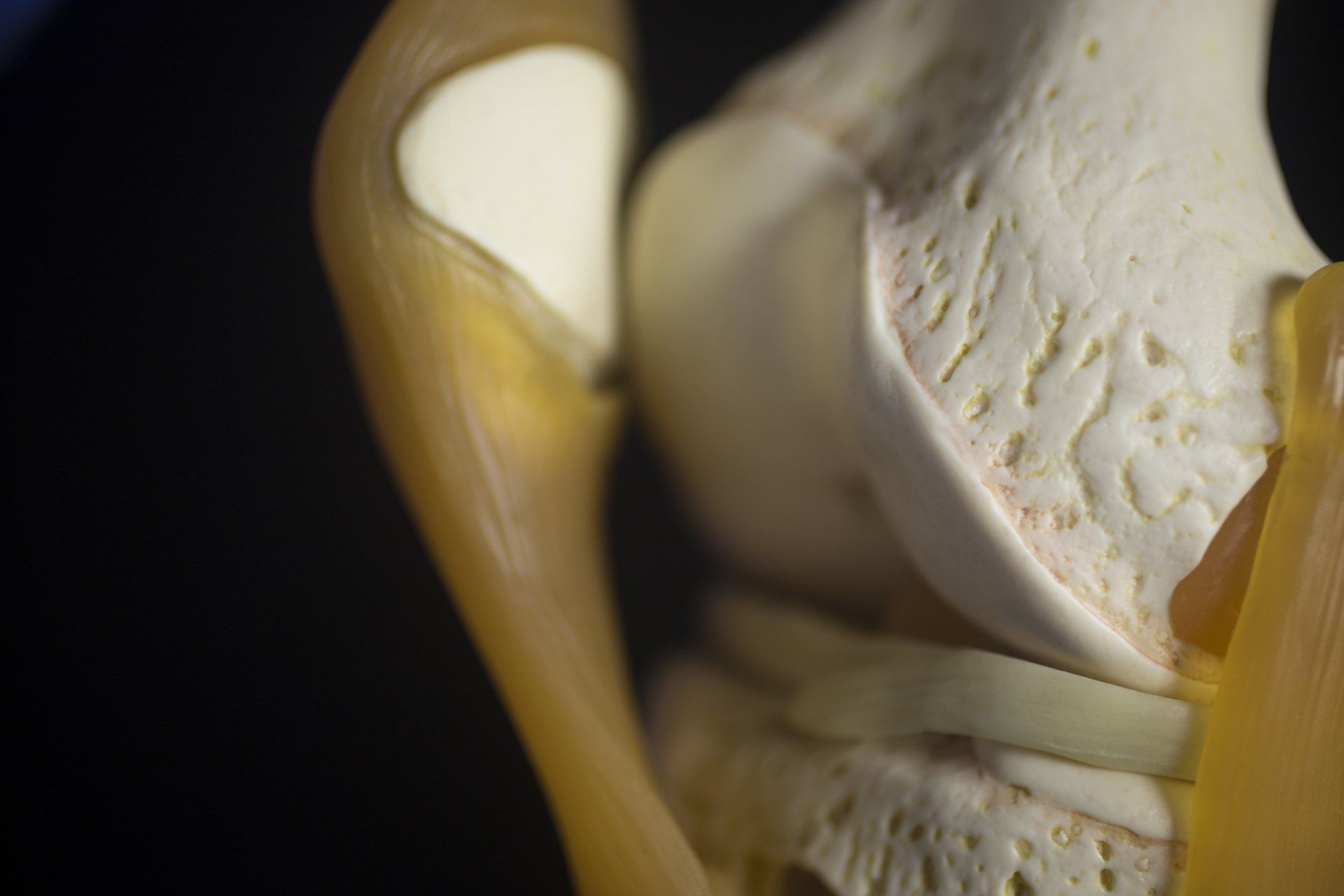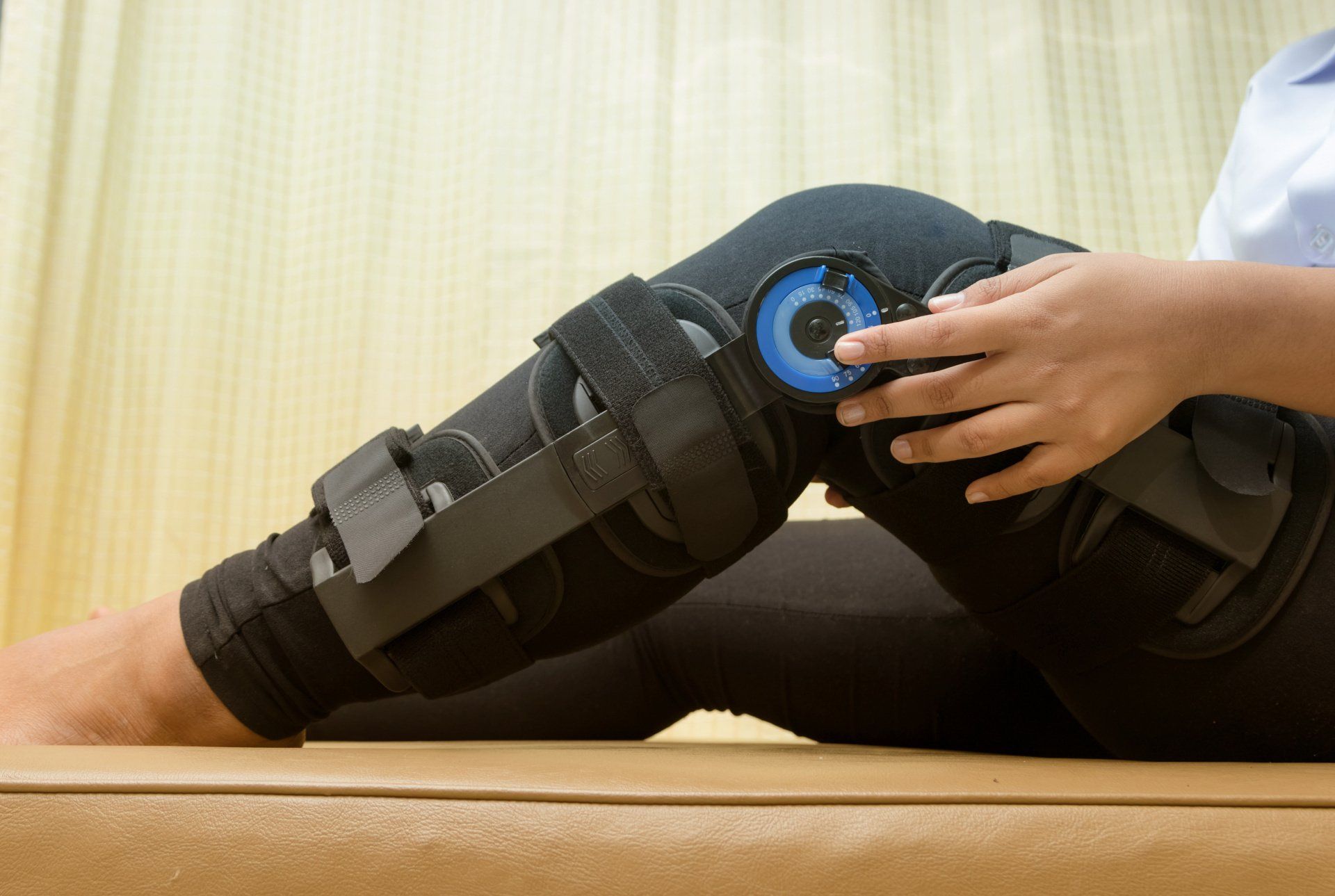Multi-Ligament Knee Injury Treatment Baton Rouge
Multi-Ligament Knee Injury Overview
A single torn knee ligament can lead to knee pain and instability. However, when multiple ligaments are involved in a tear, these symptoms are certain and severe. These types of injuries most often occur due to extreme force or trauma to the joint such as that experienced in a car accident. They are also common among athletes.
The Four Main Knee Ligaments
The knee joint is constructed by three bones - femur, tibia and patella. Additionally, there are four main ligaments which support, protect, and ensure proper alignment of the knee.
- Anterior Cruciate Ligament (ACL) - The ACL is the ligament located in the center of the knee joint. It's primary function is to control forward movement of the lower leg bone (tibia) and knee rotation.
ACL tears are common and account for an estimated 40% of all athletic injuries.
- Posterior Cruciate Ligament (PCL) - The PCL also runs through the center of the knee, connecting the shin and thigh bones. It's primary job is to control backward movement of the tibia. PCL tears are far less common and occur in roughly 3% of all knee injury cases. The majority are seen as part of a multi-ligament tear injury.
- Lateral Collateral Ligament (LCL) - The LCL is located at the outer portion of the knee where it provides support and stability. Following the ACL, the LCL is the most commonly injured knee ligament, accounting for 29% of all single ligament tears.
- Medial Collateral Ligament (MCL) - The MCL is opposite the LCL, bringing stability to the inner portion of the knee. It is the least frequently injured of all four ligaments, accounting for only 2% of cases.
Symptoms of Multi-Ligament Knee Injuries
While some isolated ligament injuries may heal without surgery, nearly all cases of multi-ligament knee injuries will require a surgical repair. Ideally, this repair will occur within three weeks of the injury. This timeline allows initial swelling to subside, reduces scar tissue, and improves post-operative outcomes.
The specific type of surgery to be performed will depend on the patient, severity of the injury, and the specific ligaments involved. In most cases, reconstruction of the ligaments will be necessary. This can be accomplished by using the patient's own tissue or cadaver tissue if necessary.
Rehabilitation of Multi-Ligament Knee Injuries
Rehabilitation of the knee following ligament repair is vital to recovering fully. Immediately following surgery, patients can expect to be greatly limited in mobility and weight bearing. Around 8 weeks post-op, most patients will be allowed to bear at least 50%, if not 100% of their weight. During this time, regular orthopedic physical therapy will also be an important component, including exercises to improve balance, strength, and gait.
Multi-Ligament Knee Injury Specialists in Baton Rouge
JOSEPH E. BROYLES, M.D.
Joint Replacement Surgery
Hip and Knee Arthroscopy
Cartilage Regeneration
ARTHUR E. HESS, M.D.
Pediatric & Adult Orthopedic Trauma
Hip, Knee & Shoulder Reconstruction
Hip Preservation
Total Joint Replacement Surgery
Robot-assisted total knee arthroplasty
General Orthopedics
MATHEW J. MAZOCH, M.D.
General Orthopedics
Sports Medicine
Shoulder Surgery
ALAN C. SCHROEDER, M.D.
Shoulder Arthroscopy
General Orthopedics
Orthopedic Sports Medicine







